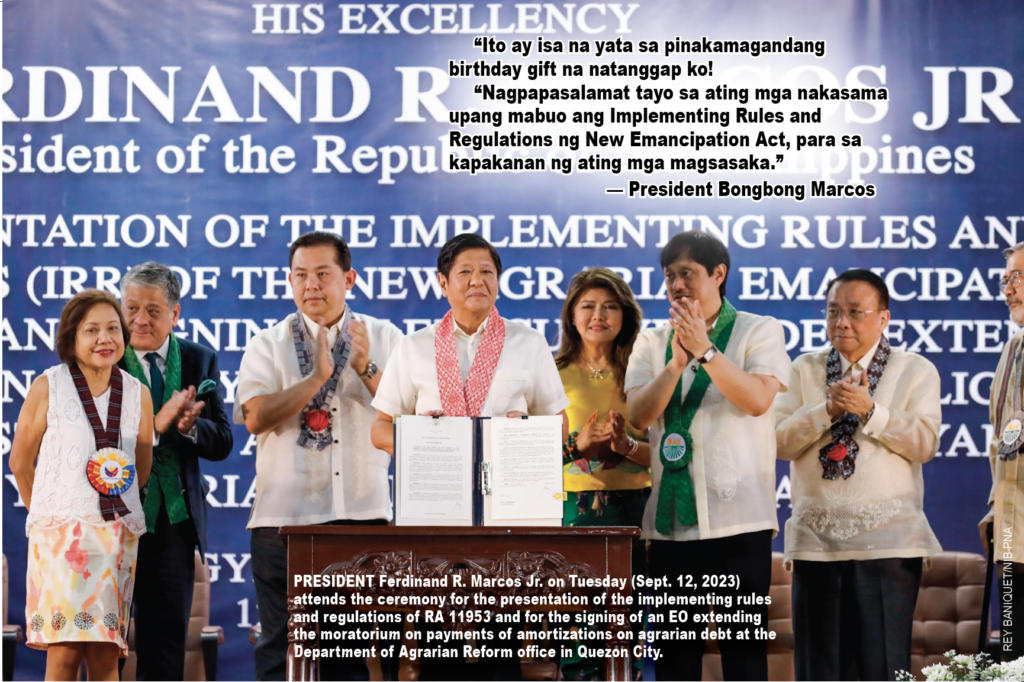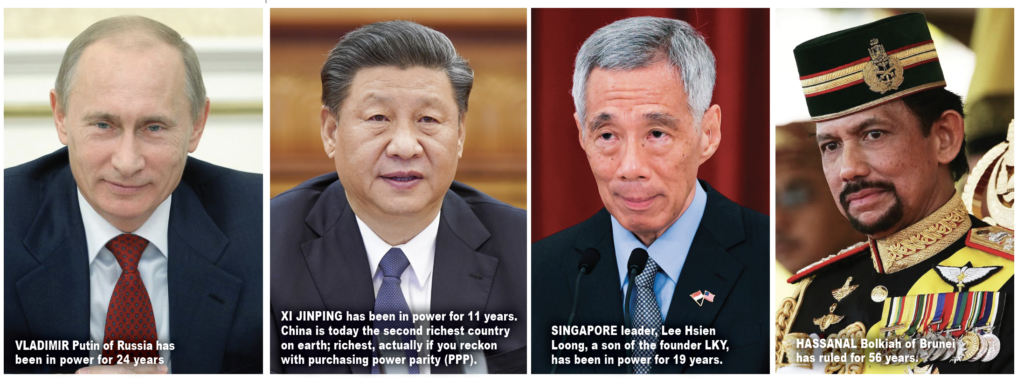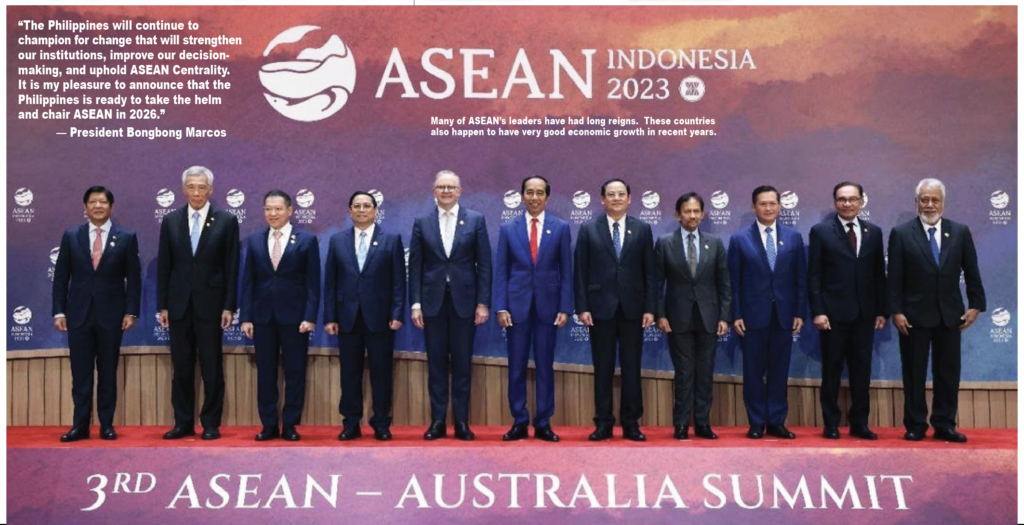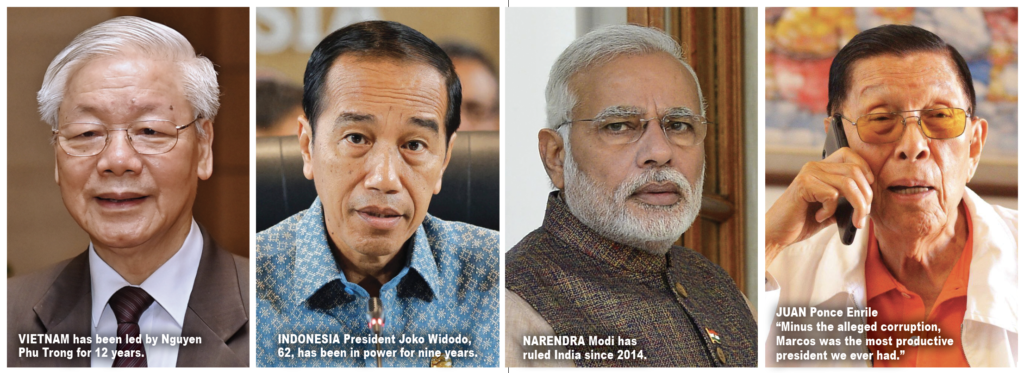By Tony Lopez
The nation marked the 106th birth anniversary of Ferdinand Edralin Marcos on Sept. 11, 2023.
His only son and namesake, Ferdinand “Bongbong” Romualdez Marcos Jr., marked his 66th birthday, Sept. 13, 2023.
Both birth anniversaries were remarkable for being marked unremarkably. There were no holidays (except perhaps in Ilocos Norte, FM’s birth place) and no birthday parties. BBM was born in Manila.
During his presidency, two issues were prominent against Marcos Sr. His long reign—20 years and 57 days (Dec. 30, 1965 to Feb. 25, 1986). And alleged corruption.
Since Marcos’s ouster in 1986, corruption has been a standard issue against all his successors. If you check the allegations, the president who comes after the last president seemed to be more corrupt, and he or she in turn is succeeded by an even more corrupt president.
So with all the corruption in high places, why is the Philippines still standing, seemingly prosperous?
Answer: The Philippines is indeed very rich, considering all the colossal corruption in six decades.
Long reign seems to be the paradigm today. Especially among Asian leaders.
Remarkably, nations led by long reigning leaders seem to be prosperous or at least are doing very well.
They even manage to wage costly wars (like Russia where Vladimir Putin has been in power for 24 years) or cause tensions among their neighbors (China).
The Philippines is surrounded by neighbors with long-reigning leaders.
Xi Jinping has been in power for 11 years. China is today the second richest country on earth; richest, actually if you reckon with purchasing power parity (ppp).


Tiny Singapore has been ruled by a single family since its founding 58 years ago. Singapore per capita income is $82,808—23x the capita income of $3,570 of the Philippines where presidents are limited to a single six-year term.
The current Singapore leader, Lee Hsien Loong, a son of the founder LKY, has been in power for 19 years.
Hassanal Bolkiah of Brunei has ruled for 56 years.
Vietnam has been led by Nguyen Phu Trong for 12 years. Its GDP grew 8.02% in 2022 although growth would only be 4.7% this year. Still, President Biden made it a point to visit Hanoi on his way back to the US and elevated America’s relations with its former enemy to its highest strategic level. Now, that’s what I call a turnaround story. Vietnam is becoming Asia’s manufacturing hub.
With only one major tourism attraction, Angkor Wat, Cambodia has attracted more tourists (6.6 million in 2019) than the Philippines which has hundreds of attractions. Its economy is growing at 5.5-6% clip. Hun Sen has ruled the nation of 16.5 million in the last 39 years.
Indonesia ASEAN’s largest economy
ASEAN’s largest economy is Indonesia, No. 7 richest in the world in GDP PPP. Indon per capita income is $7,753, more than twice that of the Philippines whose literacy rate is double than of Indonesia 20 years ago.
The secret? Indonesia President Joko Widodo, 62, has been in power for nine years. Today, with the shift to EVs, investors are keen on Indonesia for its nickel, an essential component of EV batteries. Indonesia is the world’s largest nickel producer.
Then there is India, ruled by Narendra Modi since May 2014 who has transformed its economy into middle income, with consumption and investments driving growth. Labor is a demographic dividend.
According to a Harvard Business Review article, “by 2030, India’s working-age population is expected to be 1.04 billion with a dependency ratio to be the lowest in its history at 31.2%, contributing just under a quarter of the incremental global workforce. The working-age population bulge is expected to last till 2055.”

‘The Asian Miracle’
Adds HBR: “‘The Asian Miracle’ was built on harnessing this trend: Japan entered this sweet spot in 1964, South Korea in 1967 and China in 1994. Additionally, India also has the largest pool of English-speaking STEM graduates in the world.”
Why is a long reign good for a country and its economy?

Says the Wall Street Journal:
“The International Monetary Fund estimates that India will become the world’s third-largest economy as early as 2027.
Earlier this year, India overtook China to become the world’s most populous nation for the first time since the 1750s. While China’s population has already begun to decline, the United Nations expects India’s to peak at 1.7 billion in 2064. And weeks before the G-20 summit, India became only the fourth nation to land a craft on the moon, and the first to land on its harder-to-reach south pole. That a Russian lunar craft crashed a few days earlier heightened India’s achievement.
Investors go to a country where they expect consistency and reliability of policies. Long reigns provide that. Also if a leader is strong, he can manage nation-building problems with some dexterity and deviousness (the positive kind).
As the longest reigning Philippine president, Marcos Sr. gave his people a sense of history, a sense of purpose, and a sense of nationhood. “I saved the country from communism,” he told me once.
FM fought communist and separatist insurgencies amid two major oil shocks — in 1973-1974 when crude oil rose nearly six-fold from $1.82 per barrel in 1972 when he declared martial law to $11 in 1974, and in 1979-1980 when oil tripled in price from $12.79 per barrel in 1978 to $35.52 in 1980.
Marcos governed the country during its most difficult period.
Marcos’s achievement
He was the first to achieve rice self-sufficiency, the first to produce an 8.9% economic growth (in 1973), the first to manage the country’s energy problem properly, the first to design a major industrialization program, and the first with a genuine land reform with an all-encompassing target of land transfers.
I once interviewed Juan Ponce Enrile. He said: “Minus the alleged corruption, Marcos was the most productive president we ever had.”
Said JPE: “He initiated the expansion of irrigation systems all over the country, the expansion of the infrastructure of the country like the Philippine Friendship Highway from Aparri to Zamboanga, the development of our port systems, the expansion of our air capability, the modernization of the military organization, and land reform.”
